Paraguay
UNESCO-Listed Jesuit Missions Are The Highlight, But There's More To This Landlocked Deviation From The Regional Gringo Trail
”… few people come to Paraguay – and even fewer still to Trinidad – meaning today I had one of the world’s least-visited UNESCO World Heritage sites all to myself…”
Image || On the Ruta Jesuítica. Sunset in the grounds of the UNESCO-listed Jesuit Mission of La Santísima Trinidad de Paraná, Trinidad, southern Paraguay. September 14, 2015.
Paraguay
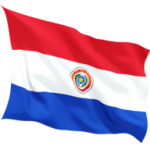
One of the least-visited countries on the continent it may be, but there are a few compelling reasons for going out of the way to visit Paraguay, the so-called Heart of South America, a landlocked deviation from the well-trodden regional Gringo Trail. Highlights include an array of 18th-century Jesuit Missions; the quirky & friendly capital of Asuncion; & Itaipu Dam, a rather mammoth Seven Wonders of the Modern World-listed hydroelectric dam, one shared with neighbouring Brazil. And because few make the effort to appreciate the country, you might just find yourself having one of the world’s least-visited UNESCO-listed sites all to yourself, not to mention the possibility of traversing international land borders unhindered & unchecked.
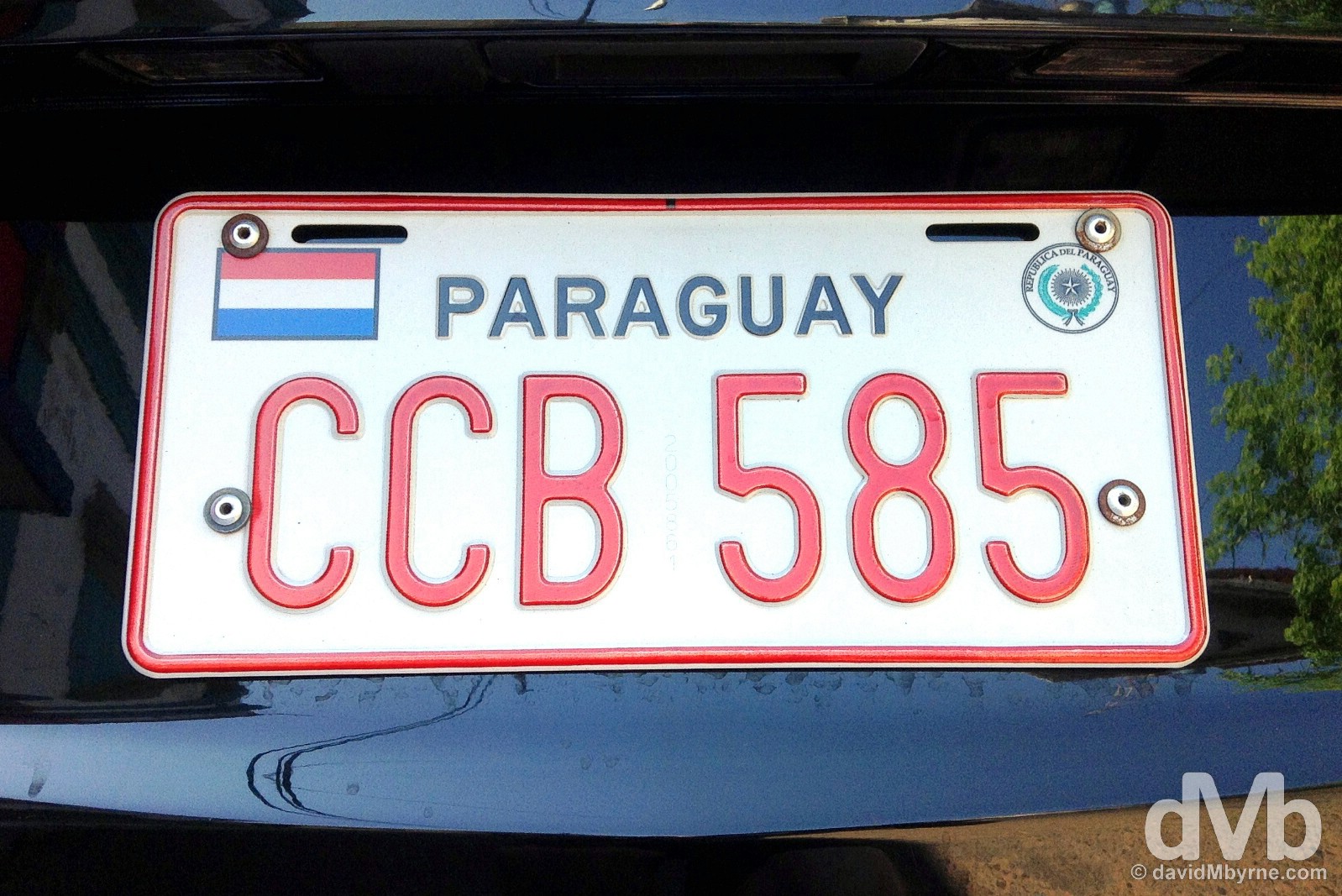
On the streets of Asuncion, Paraguay. September 9, 2015.
What follows is a recap of travels through the country as posted from the road at the time.
– ARRIVAL & THE CAPITAL – Border Crossing, First Impressions & Asuncion
– TRINIDAD & THE RUTA JESUITICA – Jesuit Mission of La Santísima Trinidad de Paraná
Asuncion
The Quirky Capital Of Over 2 Million Terere Fanatics But One Of Few Standout Highlights
”The Paraguayan seat of government & workplace for the President… the orange hulk was commissioned to bring a touch of refinement to steamy Paraguay and was designed to evoke visions of the Palace of Versailles, the White House & Westminster, all of which I’ve seen and none of which I was reminded of while standing looking at the structure.”
Image || Placio de Gobierno, Asuncion, Paraguay. September 9, 2015.
Date || September 8, 2015
Location || Asuncion, Paraguay ( )
)
Another South American day, another border crossing – this one from Argentina into Paraguay – & another story to tell. I could tell not many foreigners use the crossing I used today. Not because of the scarcity of other foreigners (I didn’t see one other gringo all day long) but because the Paraguayan Immigration official I finally presented myself to was clearly unsure as to what to do with both me and my Irish/EU passport. He gave us both a good once-over before, and very half-heartedly, he proceeded to try and extract money from me. At least that’s what I thought he was up to when pointing to a worn & rather random figure of 258,264 Paraguayan Guarani (PYG), a tad north of €40, that was posted on the inside of window of the ramshackle immigration hut.
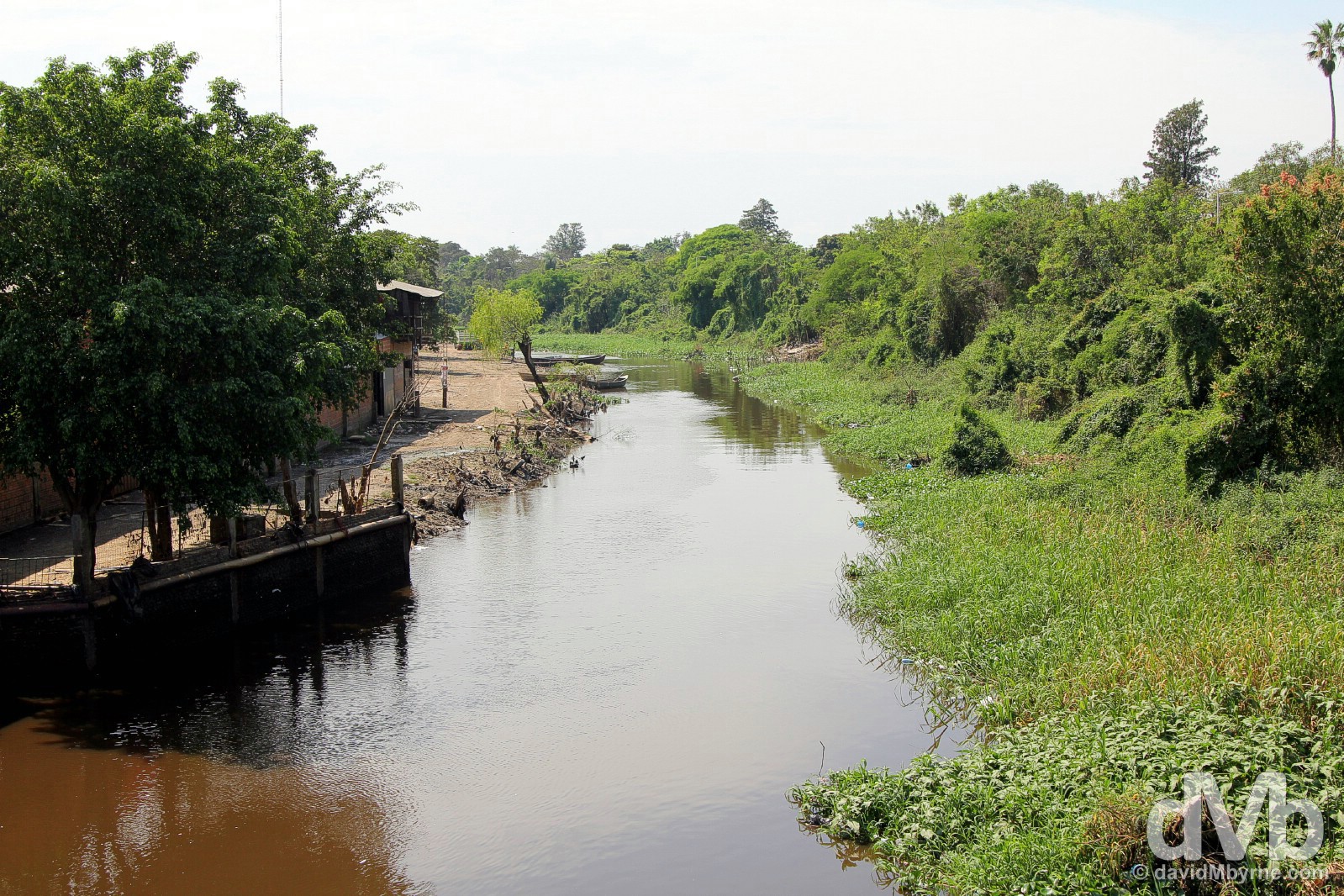
Both the Argentinian & Paraguayan Immigration huts are on the Argentinian/right side of this small stream, an actual international boundary, outside the Argentine town of Clorinda, somewhere I’d spent the previous 19 hours getting to on a bus from Salta, 1,000 kilometres to the west (it was a fleeting first visit to Argentina, but I’ll be back very soon such is the west to east to west – Argentina to Paraguay to Brazil to Uruguay & back to Argentina – route I’ll be taking over the coming few weeks). I located the Argentinian (exit) hut no problem, but totally missed the neighbouring Paraguayan (entry) one, easily done given the chaotic surroundings: locals come & go at will so there doesn’t seem to be much of a need for officialdom save for the rare occasion when gringos like me decide to pass through. When I didn’t find Paraguayan immigration on the Paraguayan/left side of the stream – in the third-world-esque, river-hugging Paraguayan settlement of Puerto Elsa – I returned to the Argentinian side. It was then that the Paraguayan official told me he’d seen me meander across the bridge, the border, and into Paraguay. He’d also seen me return. Effectively I’d entered & exited Paraguay without permission & that, and as far as I could discern, was the basis for the tepid attempt to relieve me of Paraguayan funds I’d not yet acquired. You can’t blame an immigration official in this part of the world for giving it go, but ultimately the first Paraguayan I interacted with didn’t get PYG 258,264 of my money, just a ‘gracias’ & nod of appreciation when he finally decided to stamp and hand back my passport. Another South American border, another story to tell. The stream marking the Argentina (right)/Paraguay (left) border crossing outside the Argentine town of Clorinda, northeast Argentina. September 8, 2015.
Asuncion – World’s Cheapest?
After the border shenanigans, I now find myself in the little-visited Paraguayan capital of Asuncion, touted in some quarters as the world’s cheapest capital. With a population of 2.3 million, over a third of the country’s 6.5 million population, it is easily the largest urban centre in the country billed as the “Heart of South America“. It’s too soon to comment on the city itself – Rough Guides claims it to be ‘quirky’ – other than to say I doubt that it will deviate from the tried & tested Latin American norm of noise, pollution, plazas & colonial architecture in various stages of upkeep. I’ll explore tomorrow but right now I’m tired after my bus & border exploits. The heat isn’t helping (at 29°C, Asuncion is as warm as I have been in a good few months, since the heat of northern Colombia in mid-June) so I’m taking it easy in room 3 of El Nomada Hostel, a real find & probably the most friendly, laid-back place I’ve frequented in South American so far.
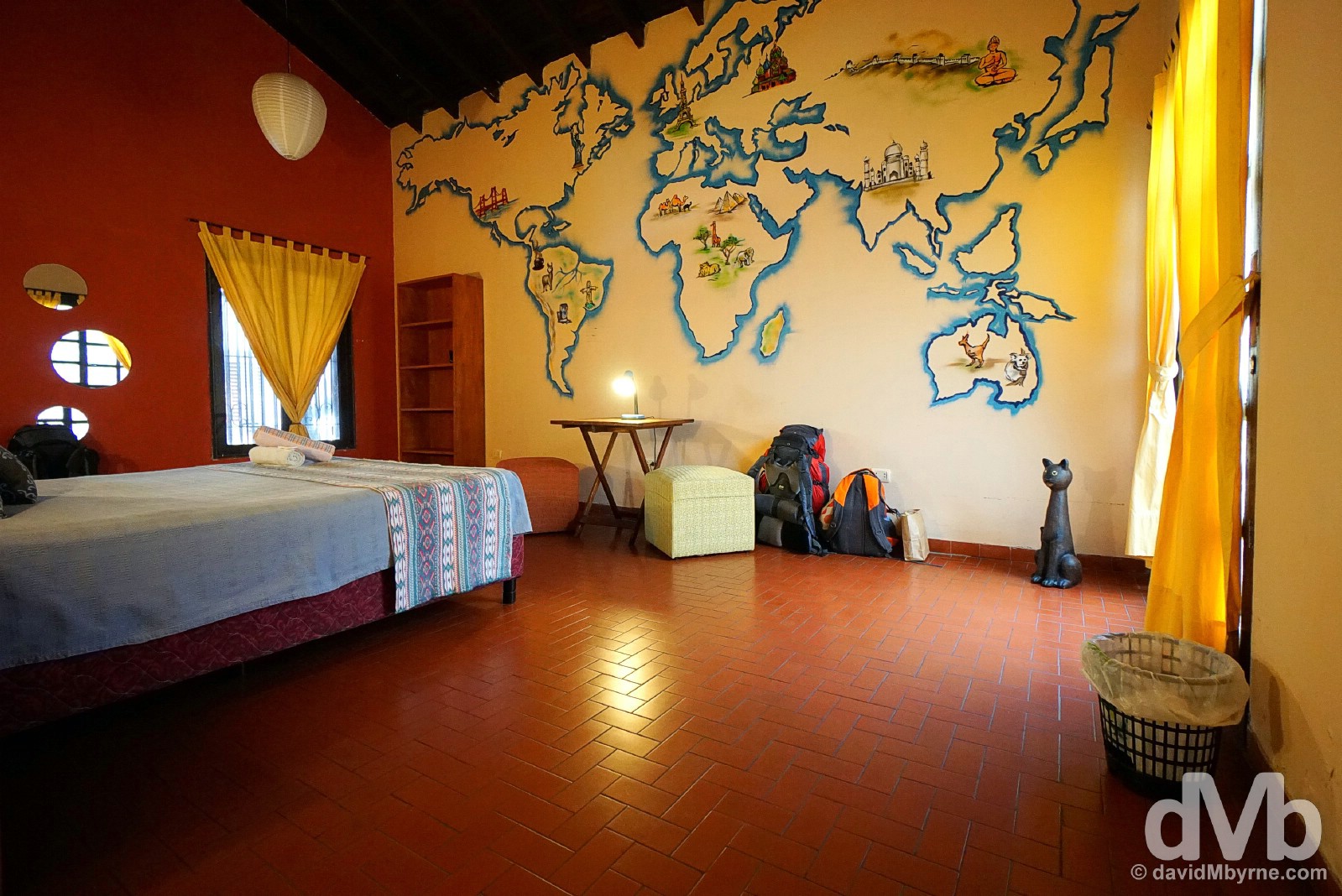
Home in Asuncion. Room 3 of El Nomada Hostel. I’d love this room even if not for the massive, wanderlust-inducing wall map. Asuncion, Paraguay. September 8, 2015.
Date || September 9, 2015
Location || Asuncion, Paraguay ( )
)
Oh yes, the Paraguayan capital of Asuncion is a quirky place alright. Here’s a few captures from a day walking the streets of what I found to be a rather unique South American capital.
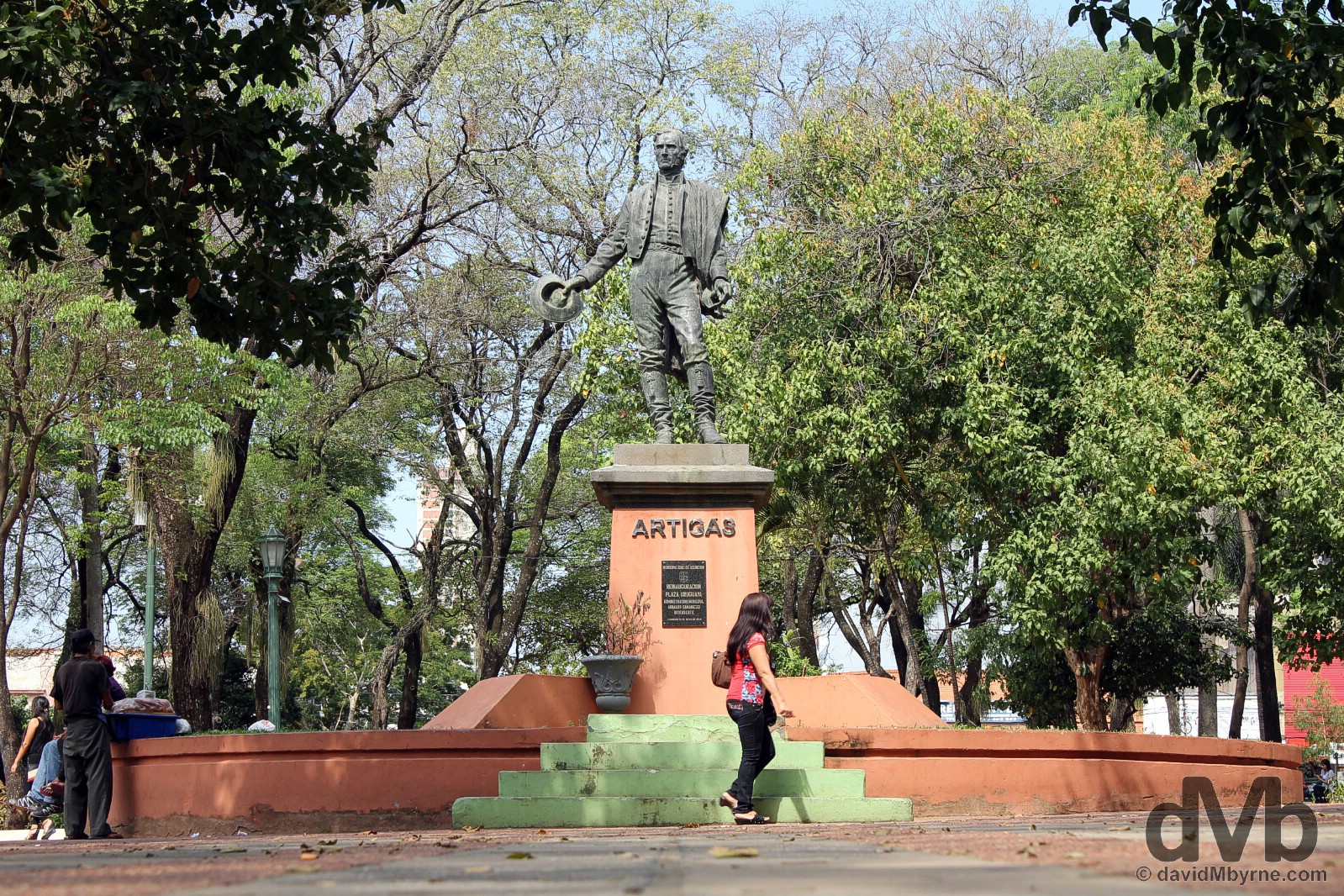
A statue of José Gervasio Artigas, a Uruguayan national hero who spent his last 30 years (1820-1850) exiled in Paraguay, in Plaza Uruguaya, Asuncion, Paraguay. September 9, 2015.
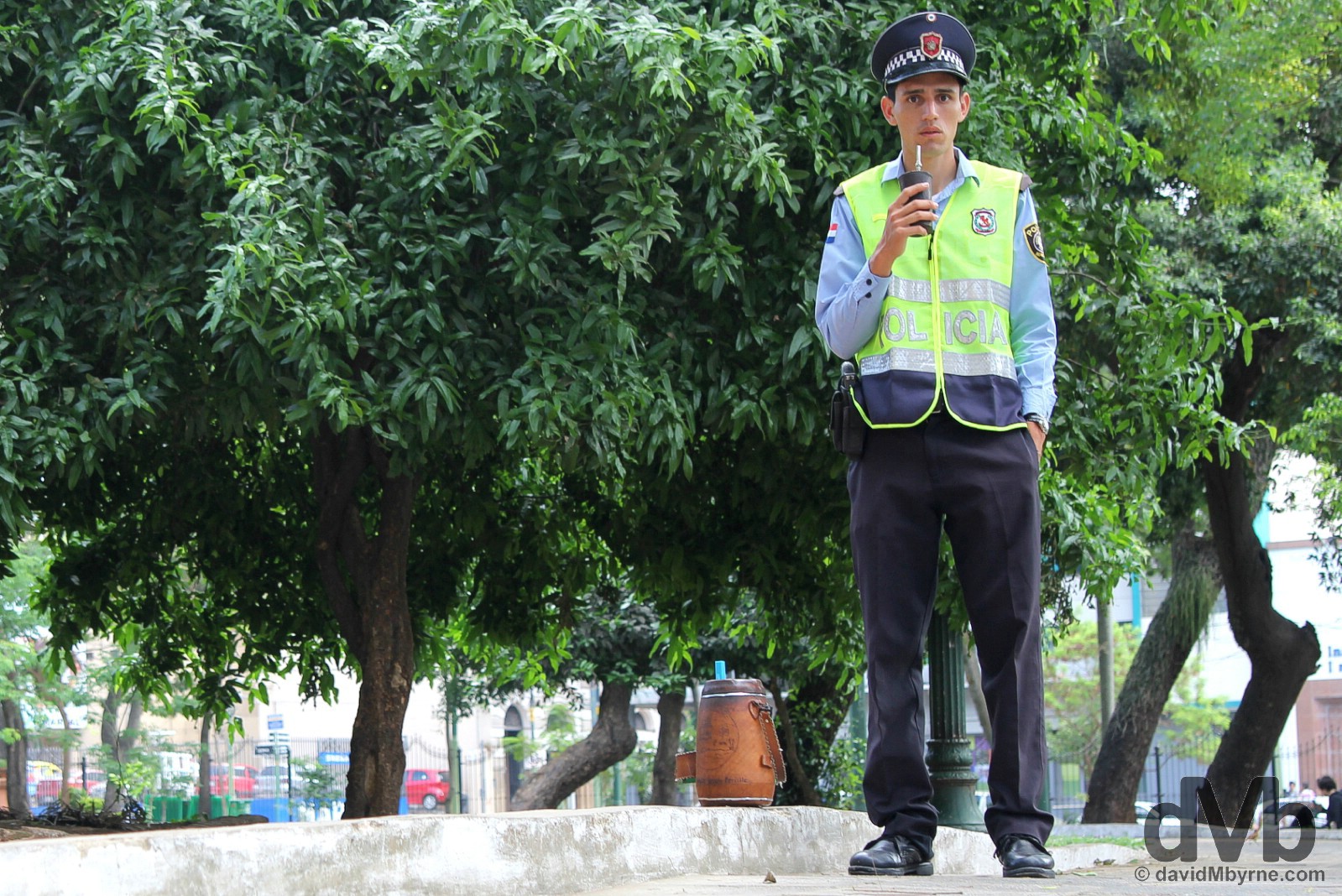
The Paraguayan capital is a tad quirky alright & none more so than were terere is concerned, a refreshing & somewhat addictive herbal tea that everyone drinks – it is easily the most widely consumed beverage in the country. The sight of large numbers of people, even down to the Police in the city’s leafy Plaza Uruguaya, carrying around large decorated thermos flasks of the stuff, which they decant into smaller vessels for consumption (always with a straw), is both very unique & rather bizarre. All I can conclude from today’s observations is that Paraguayans must pee a lot. Terere time in Plaza Uruguaya in central Asuncion, Paraguay. September 9, 2015.
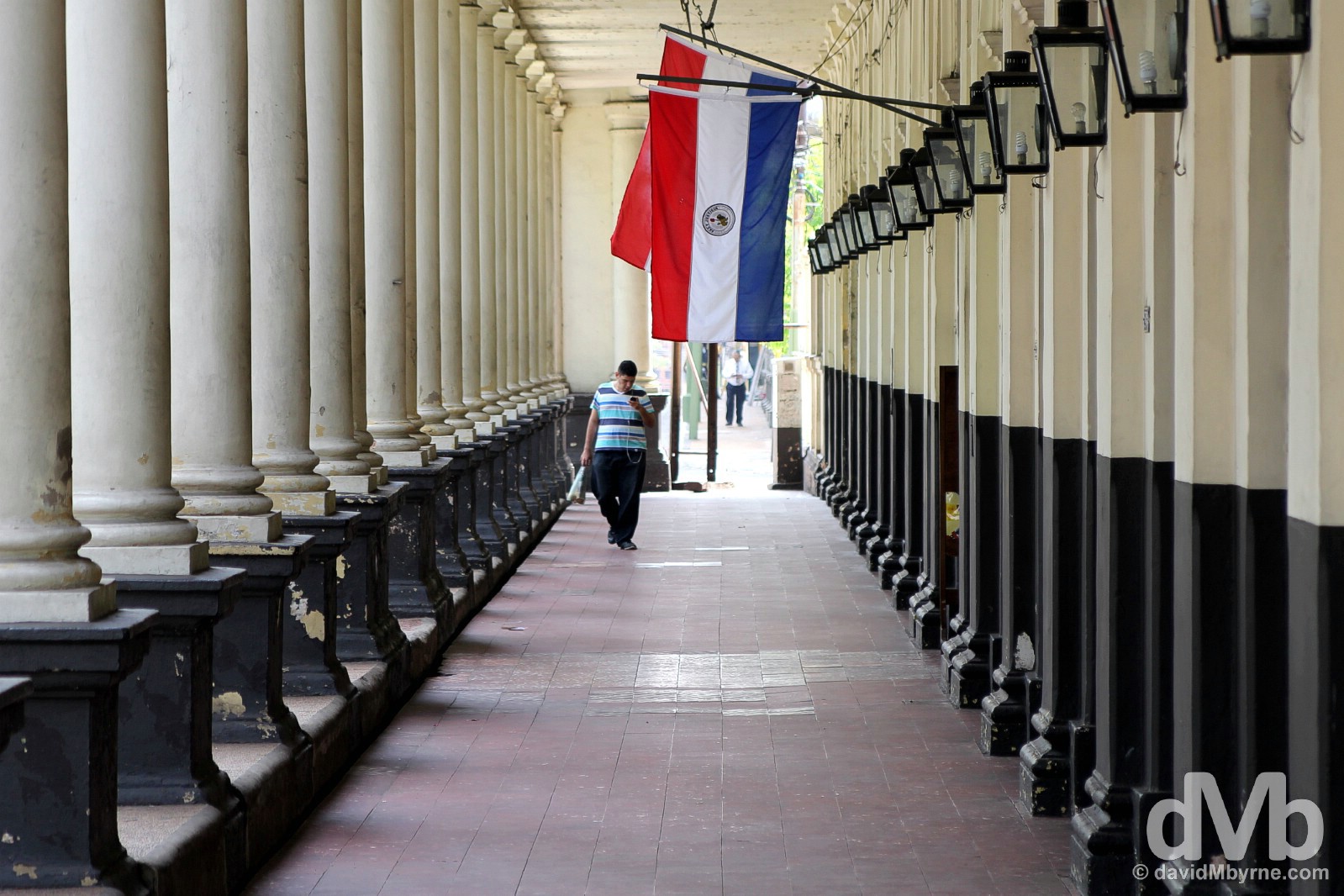
Overlooking Plaza Uruguay is Estacion de Ferrocarril, the city’s old railway station which dates to 1861. Today the deserted shell of the station serves as a museum to Paraguay’s days of riding the rails – the place is awash with ye olde train paraphernalia and there’s even a few grand old musty 19th-century train carriages to explore. If was a fun place to poke around. Outside the 1882 Estacion de Ferrocarril in Asuncion, Paraguay. September 9, 2015.
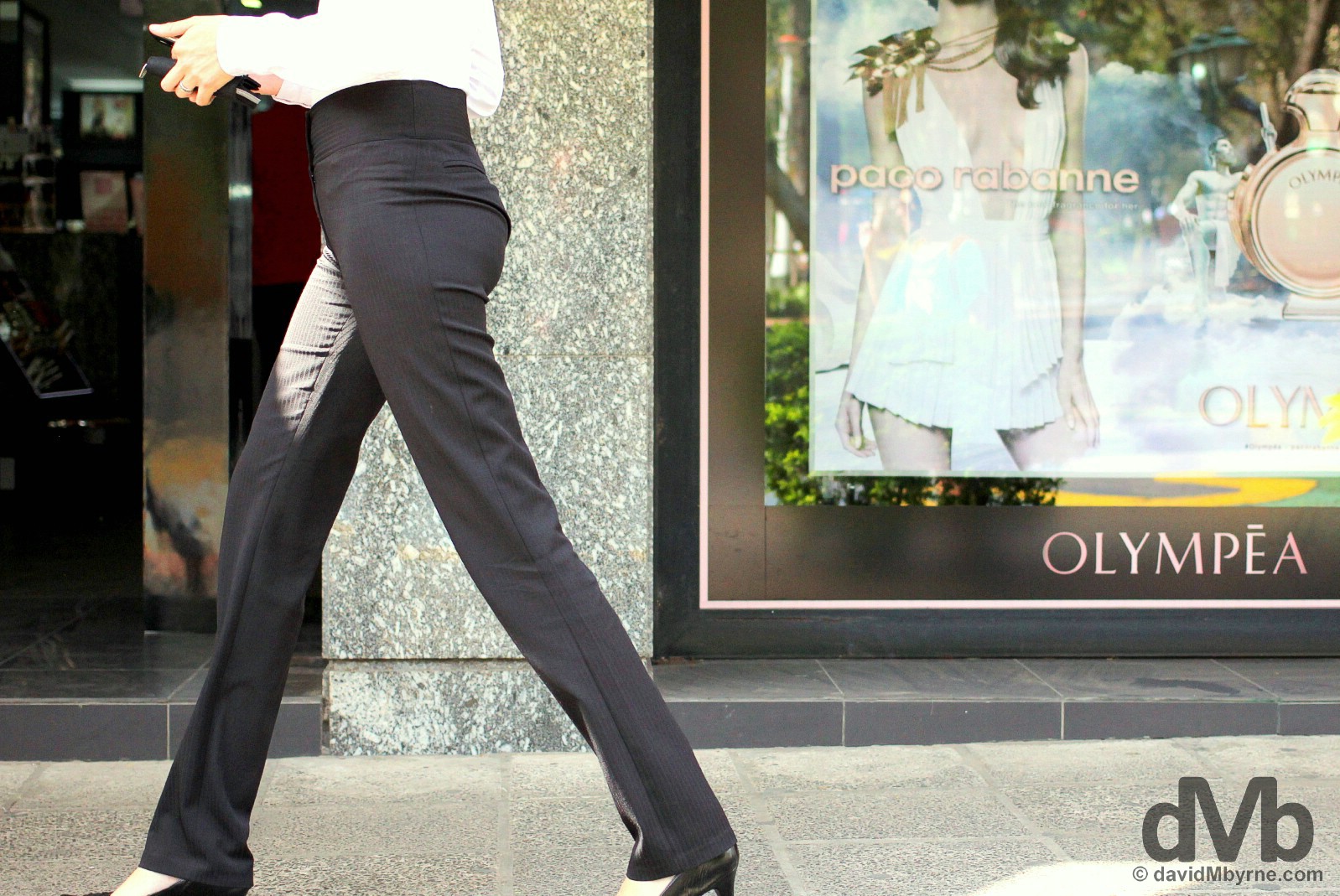
Filled with lapacho trees & made up of four squares, each with their own name, Asuncion’s central Plaza de los Heroes is ground zero in the Paraguayan capital. One side of the plaza is Palma, a busy shopping & commercial street lined with plenty of artesania stalls & fancy shops. This image is posted solely for the contrast it provides – I was struck by how overweight people on the streets of Asuncion are. Palma on Plaza de Los Heroes in central Asuncion, Paraguay. September 9, 2015.
Sitting astride the Rio Paraguay, Asuncion was once an historic centre of government for the Spanish colonies of the 1776–1814 Viceroyalty of the Río de la Plata, roughly the present-day territories of Argentina, Bolivia, Paraguay and Uruguay, the shortest-lived of the Viceroyalties of the Spanish Empire in the Americas. The city’s importance declined with the founding of Buenos Aires and thus today Asuncion’s historic centre, its Casco Historico, lacks any of the historic buildings or monuments found in other former colonial capitals. That said, it does have a few structures worth pointing a camera at, although none of which will really get the creative juices flowing.
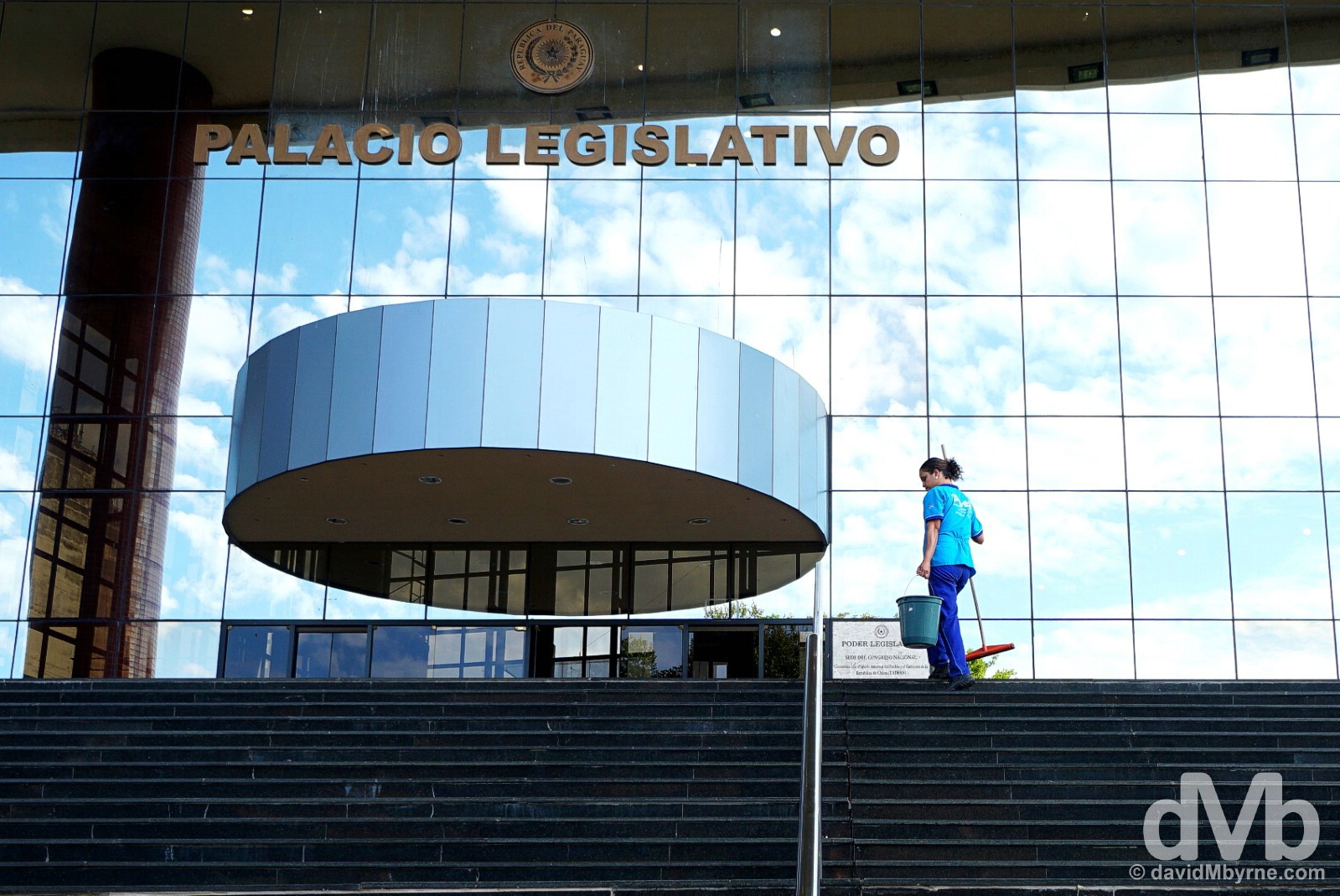
Cleaning the steps of Asuncion’s reflective Palacio Legislativo. One of the more impressive new buildings in the city, it was built in 2002 with funds provided by Taiwan. a.k.a. the Republic of China – Paraguay is one of the few countries, and the only country in South America, to formally recognise Taiwan as distinct from mainland China. Shiny, reflective & rather clean, it’s in stark contrast to the small slum settlements mere yards away, slums that lead right down to the banks of the Rio Paraguay. Asuncion, Paraguay. September 9, 2015.
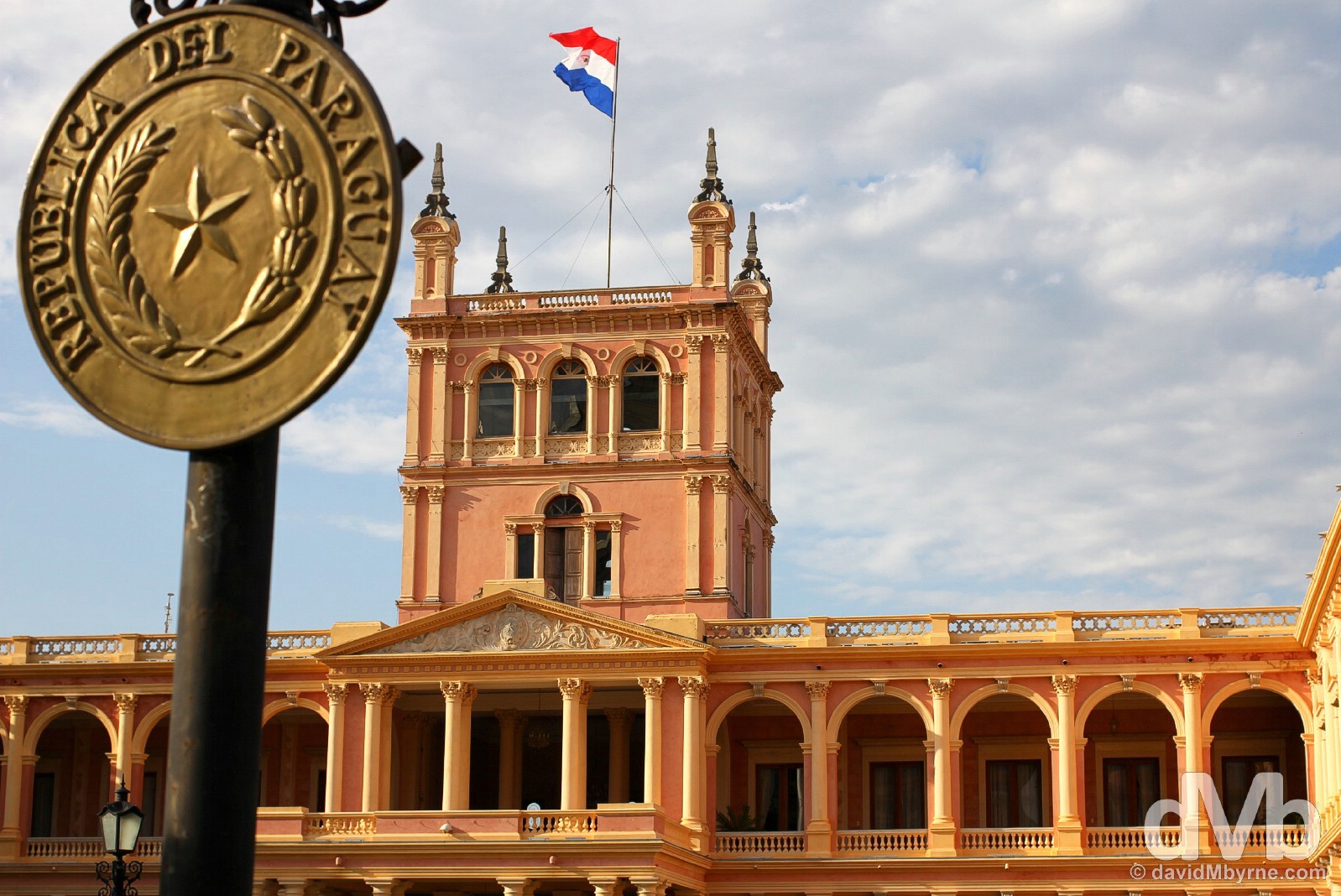
The Paraguayan seat of government & workplace for the President, the Placio de Gobierno, a.k.a. Palacio de los López, was started way back in the 1850s. The orange hulk was commissioned to bring a touch of refinement to steamy Paraguay and was designed to evoke visions of the Palace of Versailles, the White House & Westminster, all of which I’ve seen and none of which I was reminded of while standing looking at the structure. Asuncion, Paraguay. September 9, 2015.
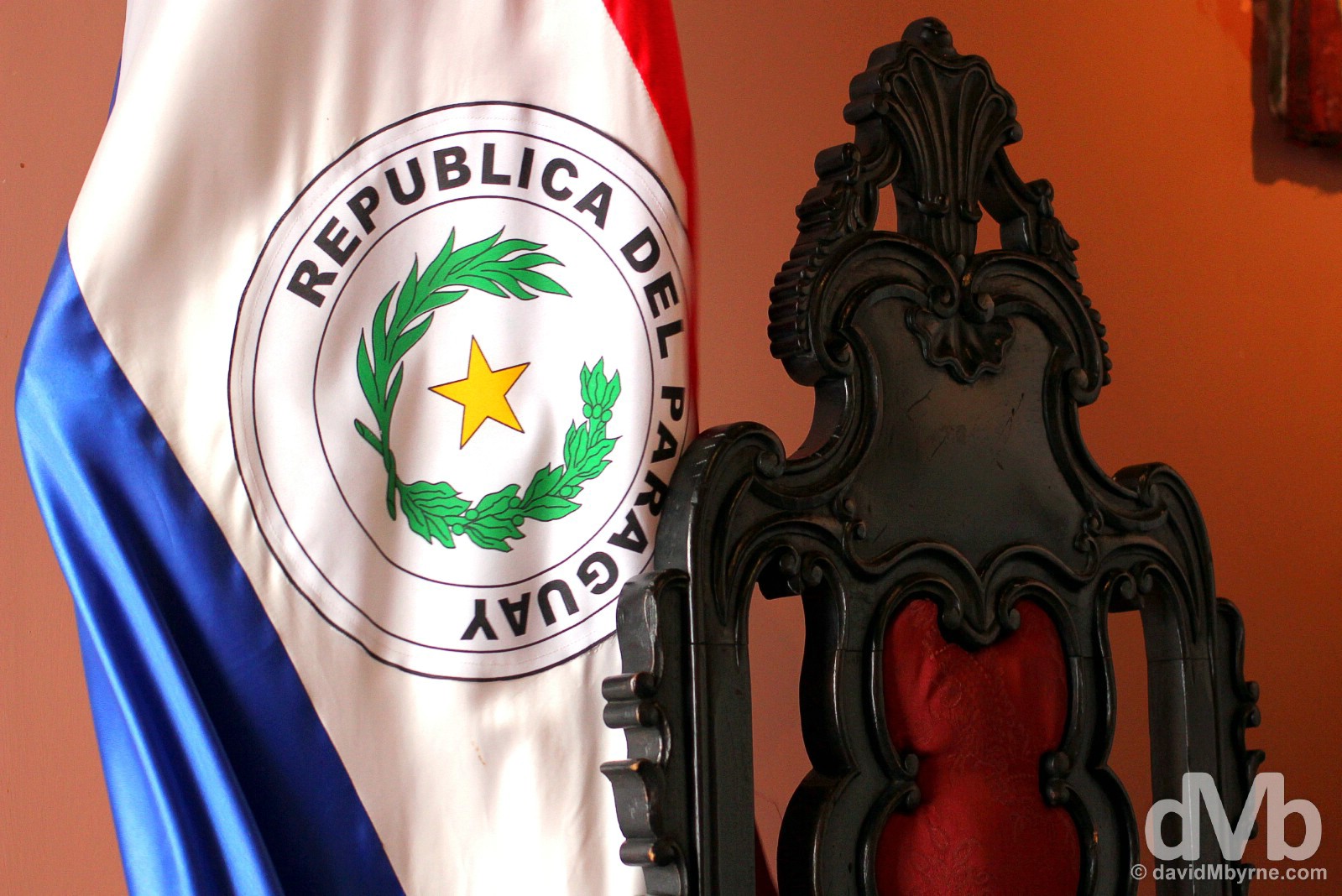
Dating from 1811, the Casa de la Independencia is one of the oldest and most important buildings in Paraguay – it was here that the architects of Paraguayan independence met in secret to formulate their plans, ultimately leading to Paraguay declaring its independence from Spain in 1811. Today the casa houses a museum to the event. Casa de la Independencia in Asuncion, Paraguay. September 9, 2015.

On the streets of the Paraguayan capital of Asuncion. September 9, 2015.
Trinidad
The Location For Paragyau's Best-Preserved Jesuit Mission Ruins & Paraguay's Only UNESCO-Listed Site
”… I wandered around the deserted complex dodging the late evening shadows… the light was soft, the tranquility & sense of isolation glorious.”
Image || Late evening shadows in the deserted grounds of the Jesuit Mission of La Santísima Trinidad de Paraná, Trinidad. September 14, 2015.
Date || September 14, 2015
Location || Trinidad, Paraguay ( )
)
I left Brazil today for one more night in Paraguay. Not getting stamped out of Brazil or into Paraguay when crossing the Friendship Bridge connecting the two countries means I’ll have to keep an equally low profile to try avoid the authorities when returning to Brazil tomorrow. Given today’s lax border controls I doubt that’ll be an issue.
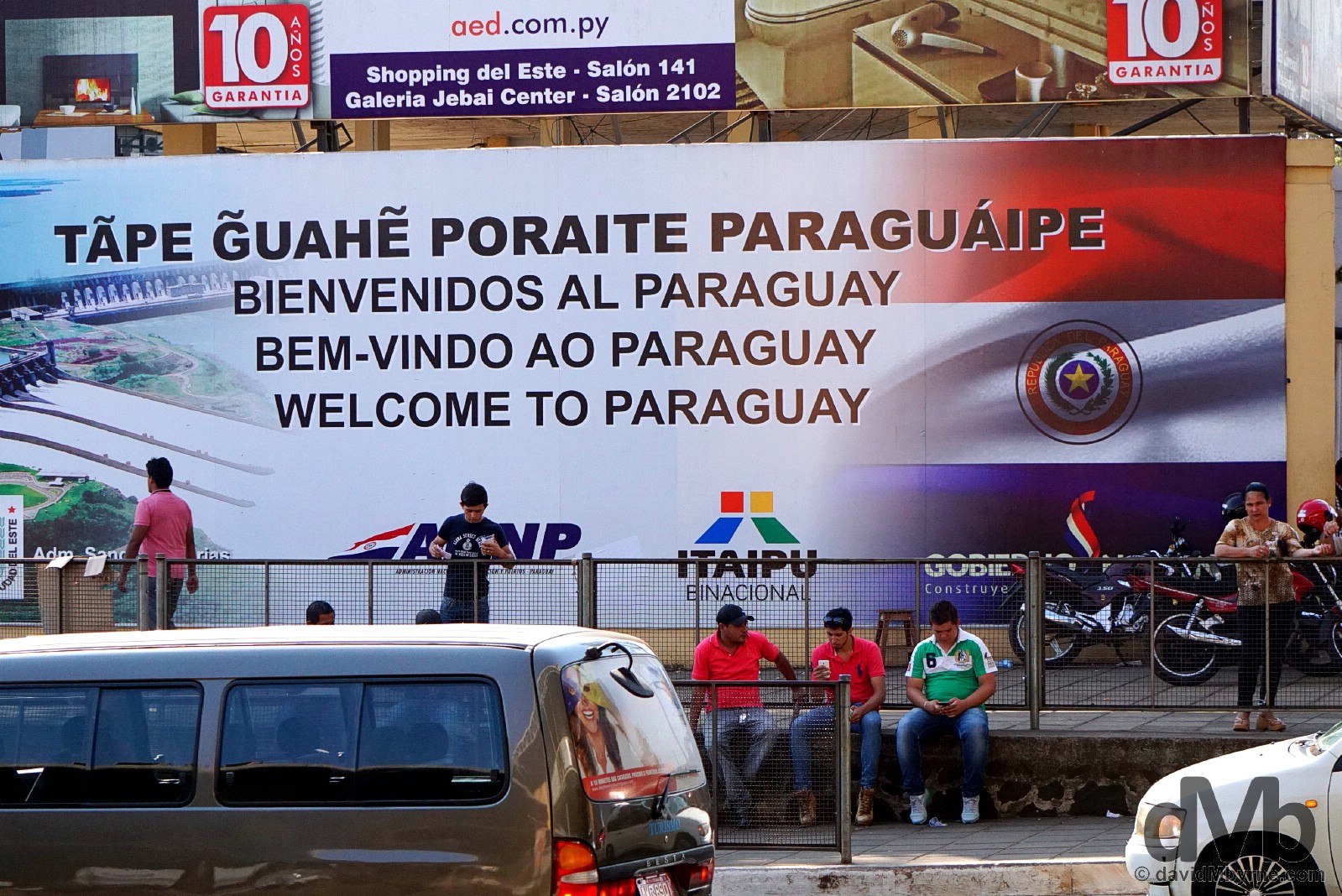
Welcome to Paraguay. Captured when (illegally) entering the Paraguayan border city of Ciudad del Este after crossing the 500-metre-long Friendship Bridge from the Brazilian border city of Foz do Iguacu, location for the mammoth hydroelectric Itaipu Dam, a gargantuan wall of concrete straddling the Brazil-Paraguay border, the second-largest hydroelectric plant on earth & one of the Seven Wonders of the Modern World (according to American Society of Civil Engineers). Ciudad del Este on the Paraguay-Brazil border. September 14, 2015.
On An Illegal Mission To Trinidad
So today was all about ignoring international border immigration laws & spending 6 hours on a bus to get here to Trinidad, a small village in southern Paraguay & the location for one of 7 Paraguayan missions, or Trienta Pueblos. Collectively these missions, visiting all of which would see you plying the so-called Paraguayan Ruta Jesuítica, are considered to be some of the most impressive creations of the religious work of the Jesuits, the religious order of Catholic missionaries that came to Paraguay in 1607 at the behest of the ruling Spanish in a bid to gather the native populations into centres called “Indian reductions” in order to Christianize, tax and govern them more efficiently.
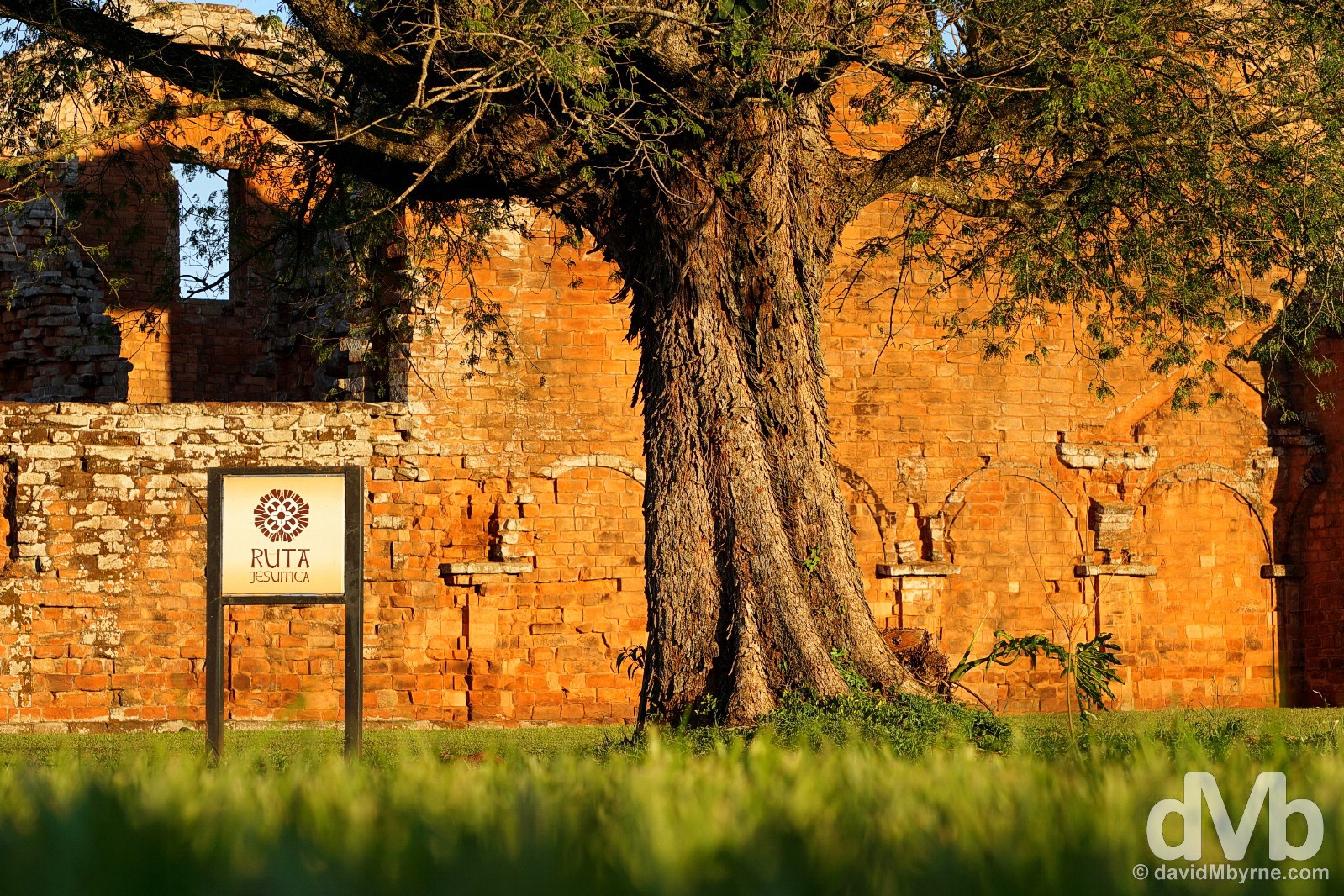
In the Cloister of the Jesuit Mission of La Santísima Trinidad de Paraná in Trinidad, southern Paraguay. September 14, 2015.
Trinidad Mission – Jesuit Mission of La Santísima Trinidad de Paraná
One of the last of the approximately 30 Jesuit Missions to be built in this region of South America, the Trinidad Mission, formally known as the Jesuit Mission of La Santísima Trinidad de Paraná, was founded in 1706 but wasn’t completed until 1760. Accommodating 3,000 people at its height in the 1730s, today its ruins are located some 30 kilometres from the present-day southern Paraguayan city of Encarnación. A large, uniform complex of lush green manicured lawns interspersed by crumbling stone buildings & wide civic spaces, it’s the most important, complete & best-preserved of all Paraguay’s surviving missions. Twined with the nearby mission of Jesús de Tavarangue some 13 kilometres to the north, this is Paraguay’s only UNESCO World Heritage site. It’s also the country’s most visited tourist attraction, but don’t read too much into that – few people come to Paraguay – and even fewer still to Trinidad – meaning today I had one of the world’s least-visited UNESCO World Heritage sites all to myself. I wandered around the deserted complex dodging the late evening shadows. The light was soft, the tranquility & sense of isolation glorious.
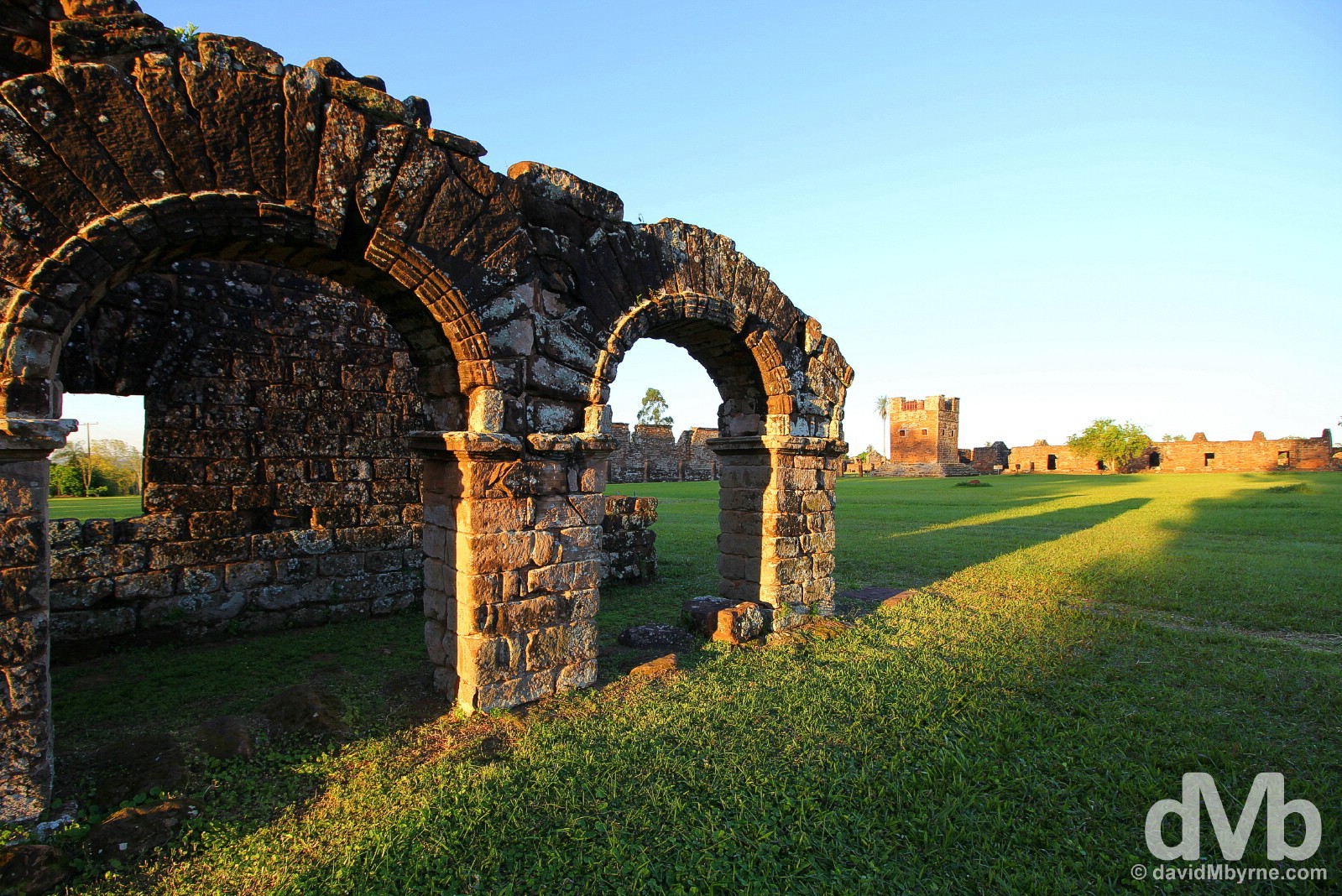
All Jesuit missions were laid out in a uniform plan. The buildings – churches, living quarters, stables, an armory, workshops, a hospital etc. – were all made of stone and were grouped about a central square, always a level grass plot kept cropped by sheep. This is a picture of remains on the outer rim of the Trinidad ruins, one of the few complex structures the onsite schematic didn’t highlight. In a section of the complex of the Jesuit Mission of La Santísima Trinidad de Paraná in Trinidad, southern Paraguay. September 14, 2015.
– UNESCO commenting on the Jesuit Missions of La Santísima Trinidad de Paraná and Jesús de Tavarangue
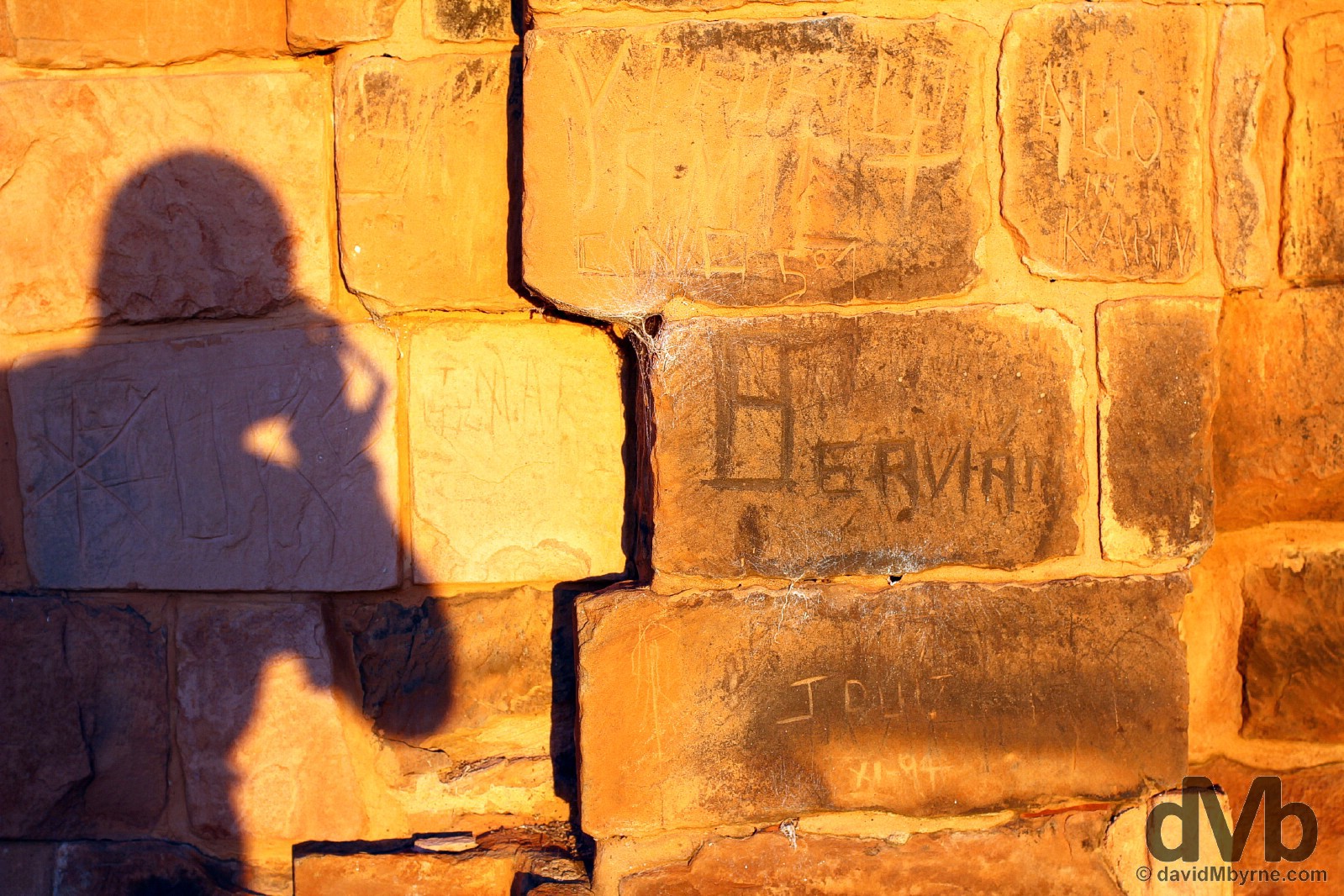
The sunset light was stunning this evening and I played a lot with shadows in various parts of the ruins, including here on the graffiti-laden walls of the complex’s Igelsa Mayor. Jesuit Mission of La Santísima Trinidad de Paraná in Trinidad, southern Paraguay. September 14, 2015.
The Jesuits
The Jesuits were a religious order of Catholic missionaries who came to Paraguay in the early 17th century at the behest of the ruling Spanish, their strategy being to gather native populations into centres called “Indian reductions” in order to Christianize, tax and govern them more efficiently. The Jesuits set about the task at hand by forming various fully self-sufficient mini-cities, Trienta Pueblos, where they not only taught the natives religion, thus converting them to Christianity, but where they also introduced them to rules of public order & society, culture & education, all of which had great influence in the later development of the region. Of their 30 settlements in South America, seven of them were in present-day Paraguay with the rest in present-day Bolivia & neighbouring regions of Argentina & Brazil. Operating totally isolated from the colonial Spanish & Portuguese worlds surrounding them, the missions flourished becoming centres of importance & being both economically powerful & influential.
– Wikipedia
All was rosy in the Jesuit world for over 150 years, but in the 1760s things turned sour – they were ultimately expelled from the continent in 1768 having worn out their welcome with the colonial rulers as a result of their insular governance & protection of the indigenous community from exploitation. Their once grand settlements went into terminal decline & today survive only as ruins dotting this central region of South America, the best-preserved of which are here in Trinidad.
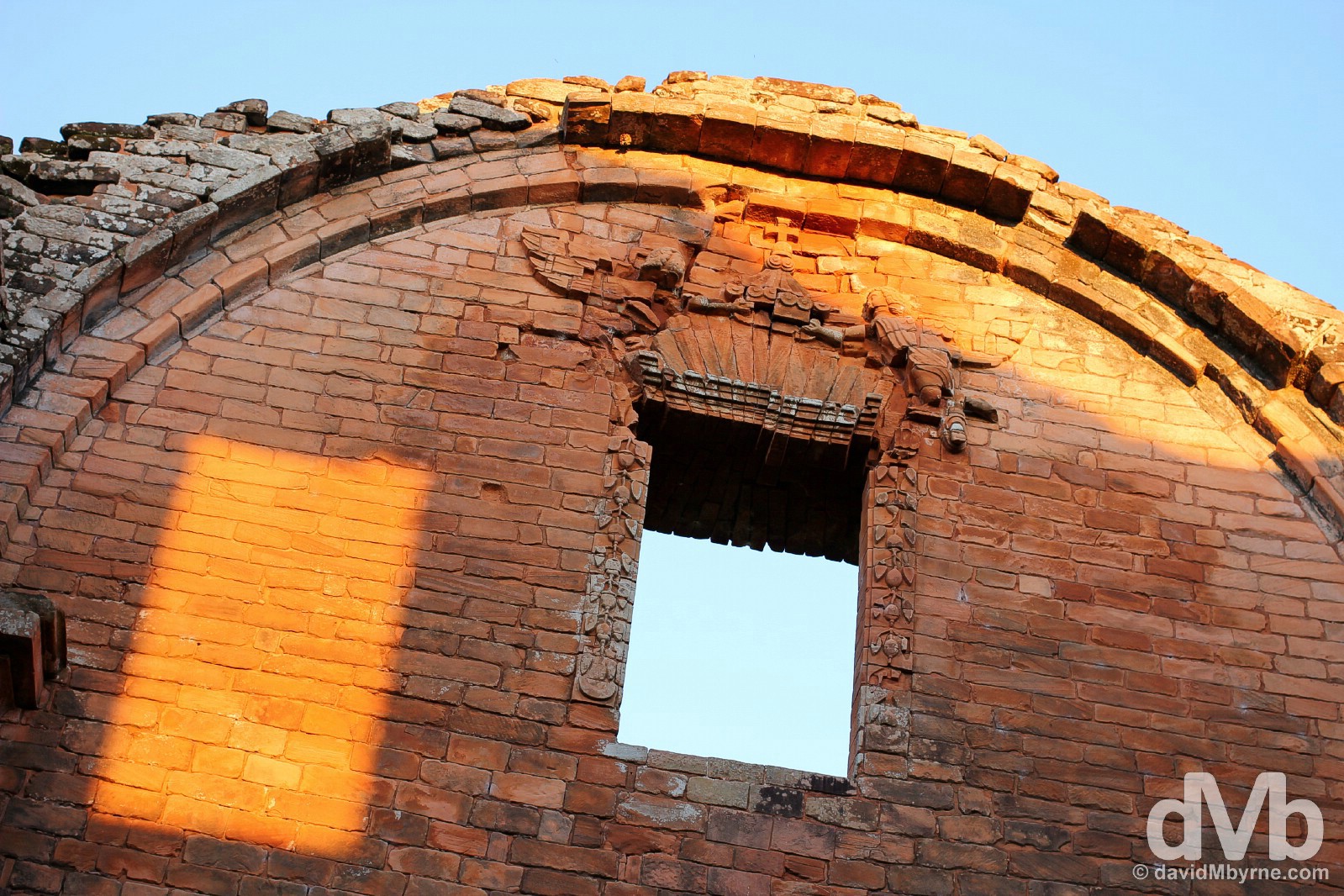
Sunset on a section of the upper walls of the Igelsa (church) Mayor. Churches were the most important structure of all Jesuit Missions. Built out of a combination of stone and fine wood, they typically had lofty towers, elaborate sculptures and richly adorned altars with statuary imported from Italy and Spain. Needles to say the Igelsa Mayor ruin is the Trinidad Mission’s most impressive structure – it’s the largest religious building among all of the Jesuit Mission ruins. Missing its roof, today the church interior boasts an altar carved out of a single stone. It’s also full of ornate stone carvings and some pretty impressive brickwork, a sampling of both of which can been seen in this picture of the setting sun on a portion of the upper reached of one of the walls of the church ruin. The Igelsa (church) Mayor of the Jesuit Mission of La Santísima Trinidad de Paraná in Trinidad, southern Paraguay. September 14, 2015.
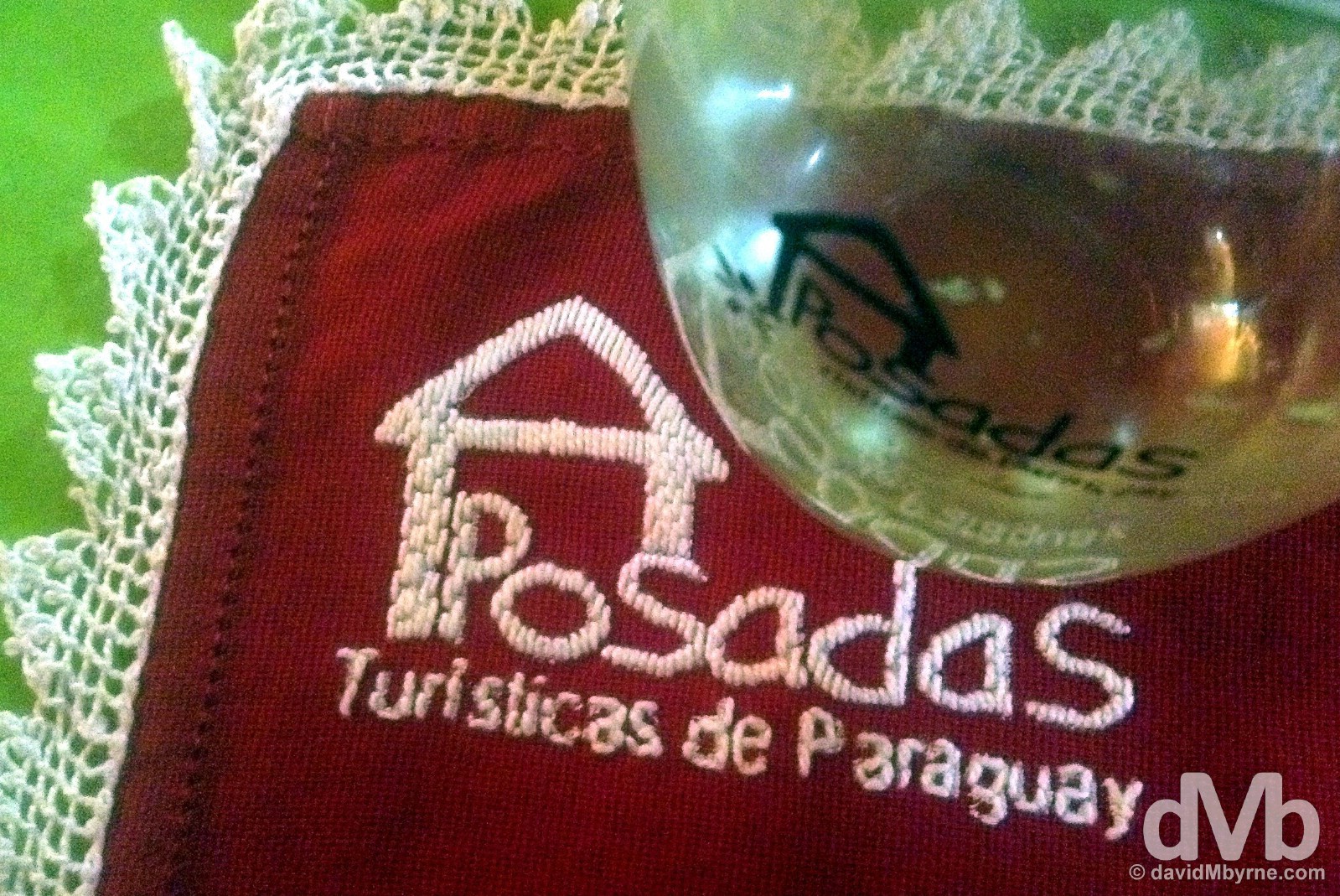
I was a tad unsure of things when (illegally) en route to Trinidad. I’d heard the village had a few posadas (inns) catering to tourists, but I wasn’t sure how to find them or what they offered. Signage in the sparsely populated village means finding a bed isn’t a problem and what they – the posadas – offer is a comfortable, detached, en-suite room with two hearty meals (dinner & breakfast), and all for the princely sum of 115,000 Paraguayan Guarani (€19). It doesn’t take much to impress me but the government-run Posadas scheme, setup to promote and facilitate tourists on the Paraguayan Ruta Jesuítica & boasting branded crockery & tableware, gets the thumbs up from me. You go Paraguay! Posada Maria, Trinidad, southern Paraguay. September 14, 2015.
